| Methods: Treatment implementation |
|
|
Tree
removal (Jan-Feb 2006)
-
Logging was conducted on deep, compacted snow to minimize soil
disturbance.
- Directional
felling was used to avoid disturbance to control plots.
- To
minimize fuel accumulation, trees were yarded with limbs attached,
if possible.
|
|
| Winter
harvest 2006 |
|
Felling |
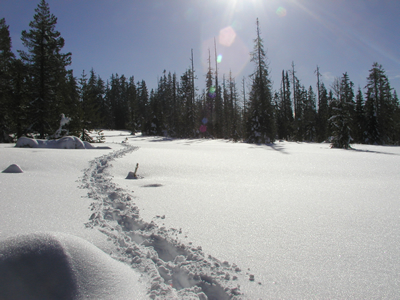 |
 |
 |
 |
| Snow
cover minimized soil disturbance |
|
|
| Larger
trees were cut with chainsaws (left) and smaller
trees, with a mechanical faller (right) |
|
|
| |
|
|
| Fuel reduction methods (Sep-Nov 2006) |
 |
| Pile-and-burn
(unburned) treatment |
|
- Slash
piles (~2 m tall, 2-4 m in diameter) were constructed by hand
in Jun 2006 and covered with polyethylene film to shed water.
- Piles
were placed in locations not sampled for vegetation.
- Ignition
occurred on the morning of 2 Nov 2006 after an extended period
of dry weather.
- Piles
burned to completion the next day (95-100% consumption).
|
| Weather
conditions |
At
09:30 hr, temperature was 5ºC (41ºF), relative humidity
was 100%, winds were SW at 3.2 km/hr (2 mph), and cloud cover
was complete.
Two-day
rainfall (2-3 Nov) at the McKenzie Bridge Ranger Station (451 m
elevation) totaled 3.3 cm |
|
| Pile-and-burn |
| Post-harvest,
28 Sep 2006 |
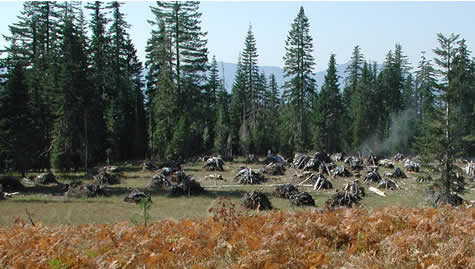 |
| Pile
burn, 2 Nov 2006 |
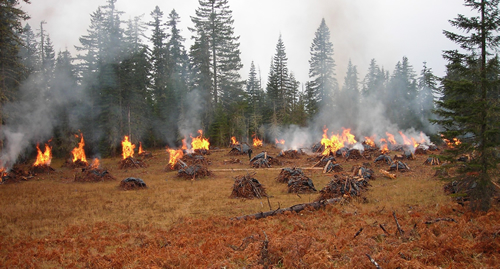 |
| Post-burn,
28 Jun 2007 |
 |
|
|
| Pile-burning |
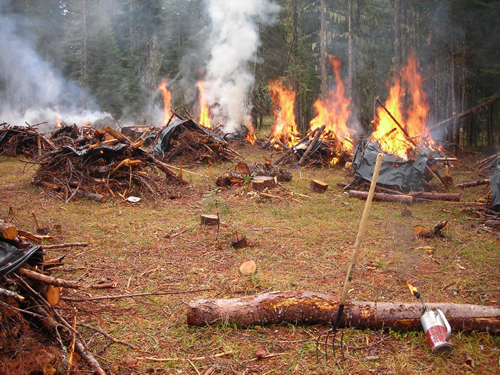 |
| Areas
between slash piles did not burn |
|
 |
| Broadcast
burn treatment |
|
|
- Narrow
fire lines (~50 cm wide) were constructed around each plot. Within
these lines, duff was removed to mineral soil.
- A
hose-lay with multiple pumping stations was established to distribute
water. Hoses extended as far as ~1 km to the most distant plot.
Water was hauled by fire engines from a distance of ~5 km and
used for pre-burn wetting of areas adjacent to the experimental
plots, as well as for holding and mop-up operations.
- Slash
was burned on 28 Sep 2006, between 11:15 and 14:30 hr.
- Individual
plots burned to completion within 0.5 to 2 hr of ignition. Flame
lengths averaged 1-2 m (max 2.4 m). Fine fuel loadings (1- to
100-hr) averaged 53-69 Mg/ha and consumption averaged 67-87% among
plots. Areas that were shaded by adjacent forest burned less intensively,
as did areas lacking woody debris.
|
| Weather
conditions |
Air
temperatures were 21-24ºC (70-75ºF), relative humidity
was 25-27%, and wind speeds were 0-5 km/hr (0-3 mph) with
no cloud cover.
Fuel
moisture prior to ignition averaged 12% (10-hr), 16% (100-hr),
and 28% (1000-hr). |
|
| Broadcast
burn |
| Post-harvest,
29 Sep 2006 |
 |
| Broadcast
burn, 29 Sep 2006 |
 |
| Post-burn,
2 Jul 2007 |
_2%20Jul%202007.jpg) |
|
|
| Post-harvest
fuel loadings |
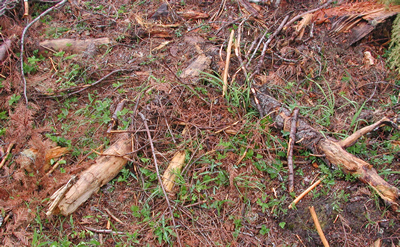 |
|
  Methods:
Design
Methods:
Design |
Methods:
Sampling  |
![]()
![]()
![]()
![]()





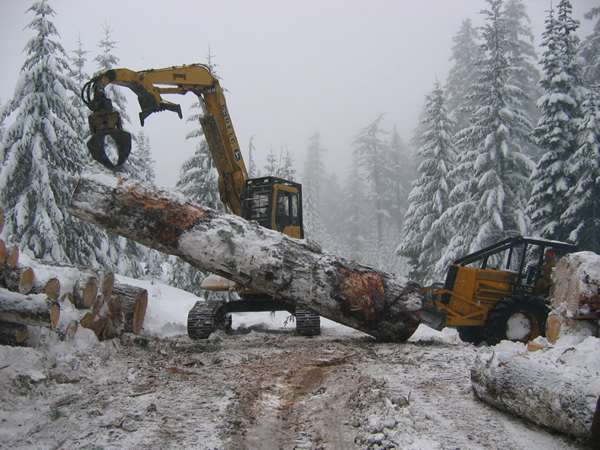






_2%20Jul%202007.jpg)
